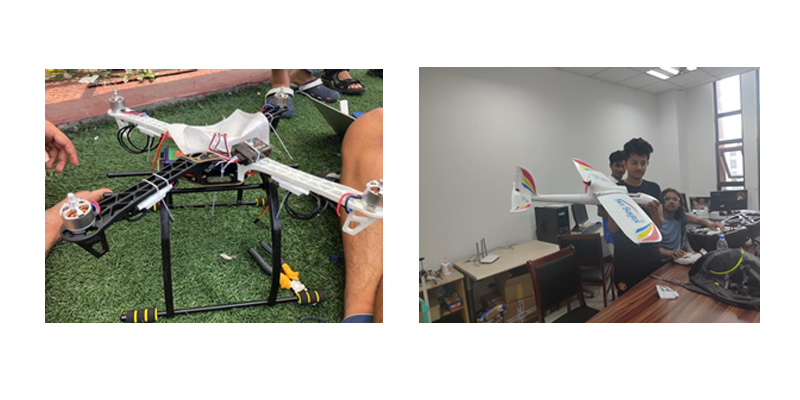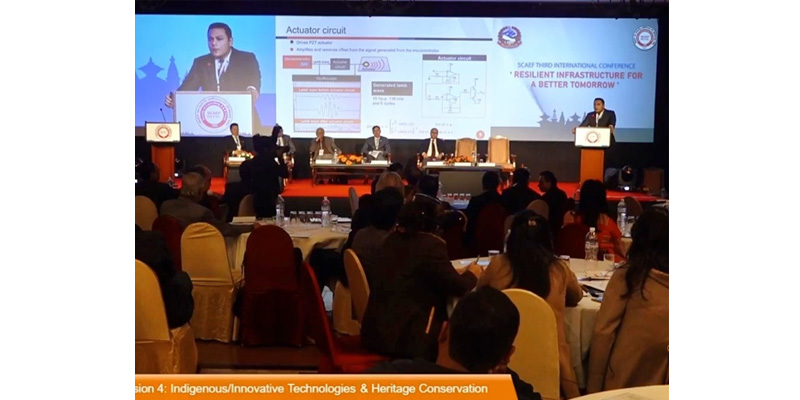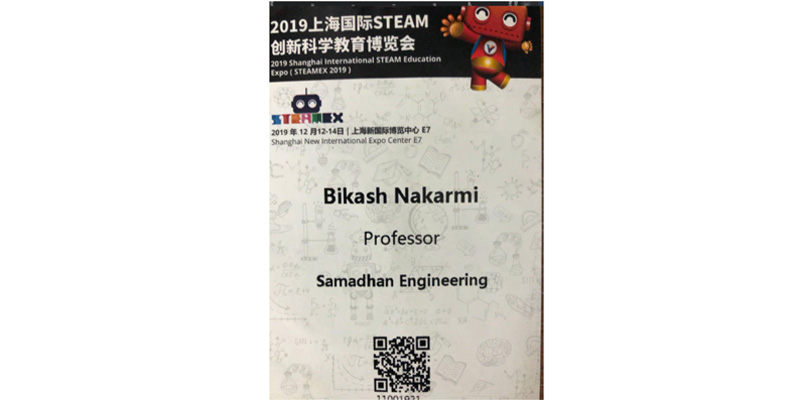
PHOTONICS: A must subject to include in Engineering Universities of Nepal

Light is very essentials for life. It starts from the natural resources sun and to the development of an artificial source of light from the fire to LEDs and the most potent and sophisticated lasers. Photonics refers to the science that deals with the light. It became not only a particular subject but have become a combination of different interdisciplinary topics. The term Photonics was coined by the French Scientist, Pierre Airgrain, in 1967, which is also term as Lightwave Technology, alternatively. At present, there are almost no electronics devices that have not used photonics in the forms, whether that is for imaging, recording, protecting, light, and others. The extensive use of photonics in different ways has shown for the importance of the light and photonics for not only for modern life but from its ancient time. It is because photonics provide several advantages such as higher bandwidth, immune to electromagnetic interference, no short circuit and others.
Fig. 1 Novel Prize winners for last decades related to photonics
The importance of photonics on modern technology for the well-being of people is inevitable. Several Nobel Prizes in the last decade awarded to the scientist and researchers that are linked with the photonics, as illustrated in Fig. 1. One of the emerging technologies of photonics that is widely used in Nepal is the optical fiber and fiber communication system. With the use of optical fiber, we have seen an improvement on the internet that has affected the way of doing business, living, and information flow. Most people in Nepal are aware of 5G and its effect on people's daily lives. A wide field of emerging technologies uses photonics as a potential candidate, as illustrated in Fig. 2. Hence, we should put a focus on photonics for different research fields focusing more on the one with the domestic implications.
Fig.2 Application of PHOTONICS
One of the widely used applications of photonics is in communication with 5G. The research on 5G would be an excellent point to start with the research on PHOTONICS in Nepal. 5G has not only implications on telecommunications and the internet but also on the way of living, working, and the lifestyles with its use on biomedical, defense, autonomous vehicles, and more. Figure 3 illustrates a few applications to be mentioned as an application of 5G, which is shaping the world. The demand of the 5G and beyond it cannot be met without the photonics from the point of view to high data rates, low latency, and less cost. These three requirements are driven mainly due to eMBB, uRLLC, and mMTC.
Fig. 3 The implementation of 5G in expanding markets application (courtesy: Skyworks solutions Inc.)
01. Enhanced Mobile Broadband (eMBB)
It can provide extremely high network throughput for dense cities, rural areas, high mobility environment, and indoor environment, as well as high-speed data download for users. It makes virtual reality (VR) and UHD TV become possible.
02. Massive Machine Type of Communication(mMTC)
The low-power Internet of Everything(loE) has a wide distribution range and a large number of terminals. Hence it requires the network to have the support capacity for mass connection and can provide the link for mass devices such as smart city, power grid, manufacturing, and logistics.
03. Ultra-Reliable and Low Latency Communication (URLLC)
It is mainly for the unique needs of the car network, industrial control, and other industries. Such applications have high requirements of latency and reliability and require ultra-high-speed processing capacity for large amounts of data. It is mainly used in a driverless car, public transport systems, unmanned aerial vehicles, industrial automation, telemedicine, and smart grid monitoring.
Among these applications areas, most are on the initial implementation stages and trails that show the high demands in the future undoubtfully. The implementation stage of these applications is shown in Fig. 4 (ref: the research survey done by IHS market).
Fig. 4 5G use case overview by HIS market (courtesy:“https://ihs-markit.foleon.com/technology/5g-is-coming-topical-report/5g-use-cases/”)
Signal generation and processing are one of the crucial and first stages of 5G. The signal generation and processing of 5G and beyond are mainly based on the microwave photonics, which deals with the higher frequency signal generation with less phase noise reconfigurable processing unit. However, the transmission to the point is through electromagnetic waves and is converted to an electrical signal at the transmitting end and converted back to optical at the receiver end. The learning of photonics for the system should start from the generation of the light signal, which includes LEDs or Lasers, different signal processing units, transmission, and the detections. Besides, the fabrication and the integration are one of the critical and most needed factors to take it to the practical implementation. Hence should be on these areas.
The research on photonics is comparatively of the high cost compared to electronics. Still, different modes of starting approaches can be taken. As we have mentioned that there is no other way to be separate from it, Samadhan Engineering has focused on developing the curriculum for Photonics and start with simulation works which can be further realized with collaboration with international players.
With this unavoidable importance and use of photonics in every field of daily lives, it is late to have a formal education and training on photonics in Nepal for the future of INNOVATIVE NEPAL. We urge all interested partners and related sectors from government, education, entrepreneurs to work hand in hand to make it feasible and workable in earliest.
Written and Edited by: Samadhan Engineering










 +977-9810395846
+977-9810395846